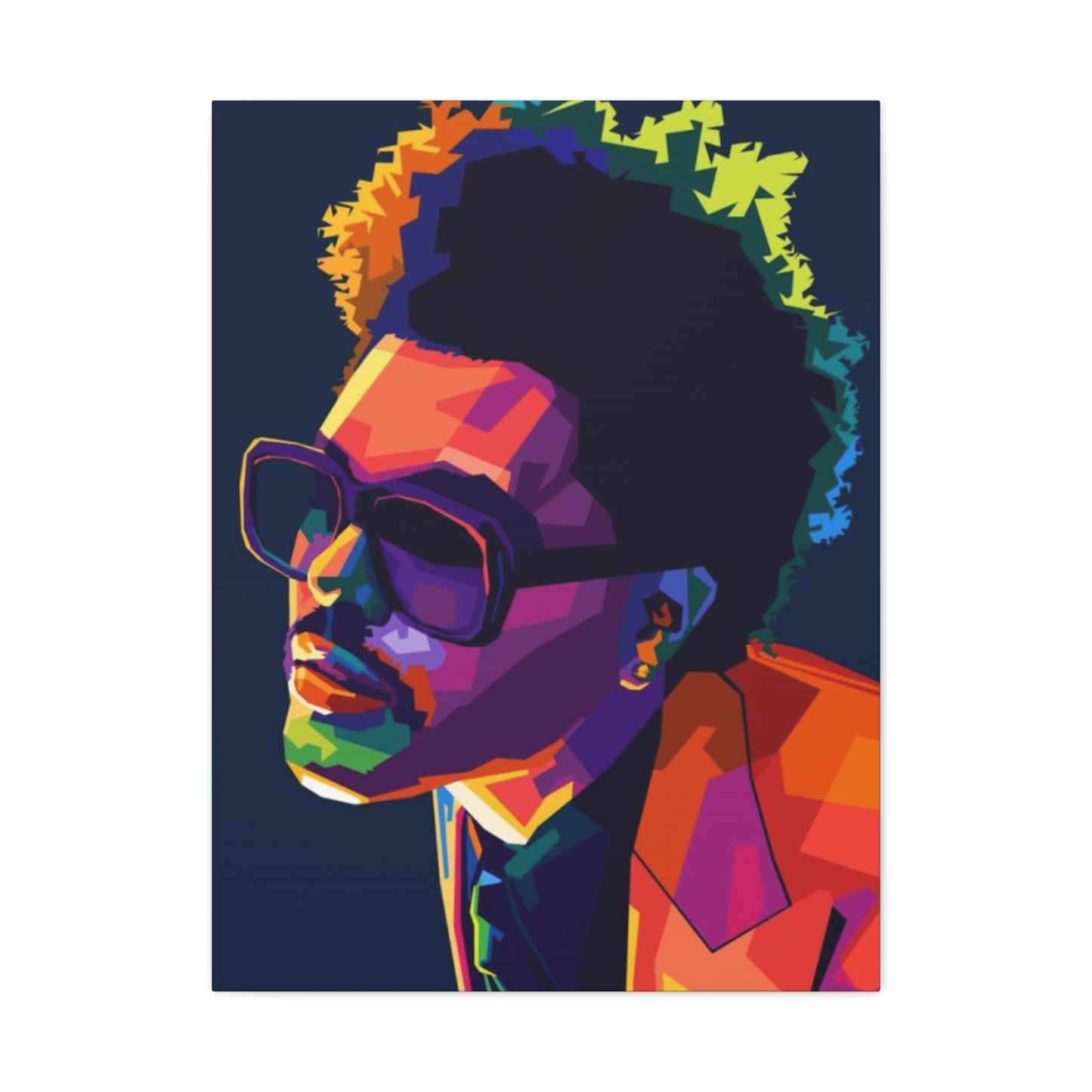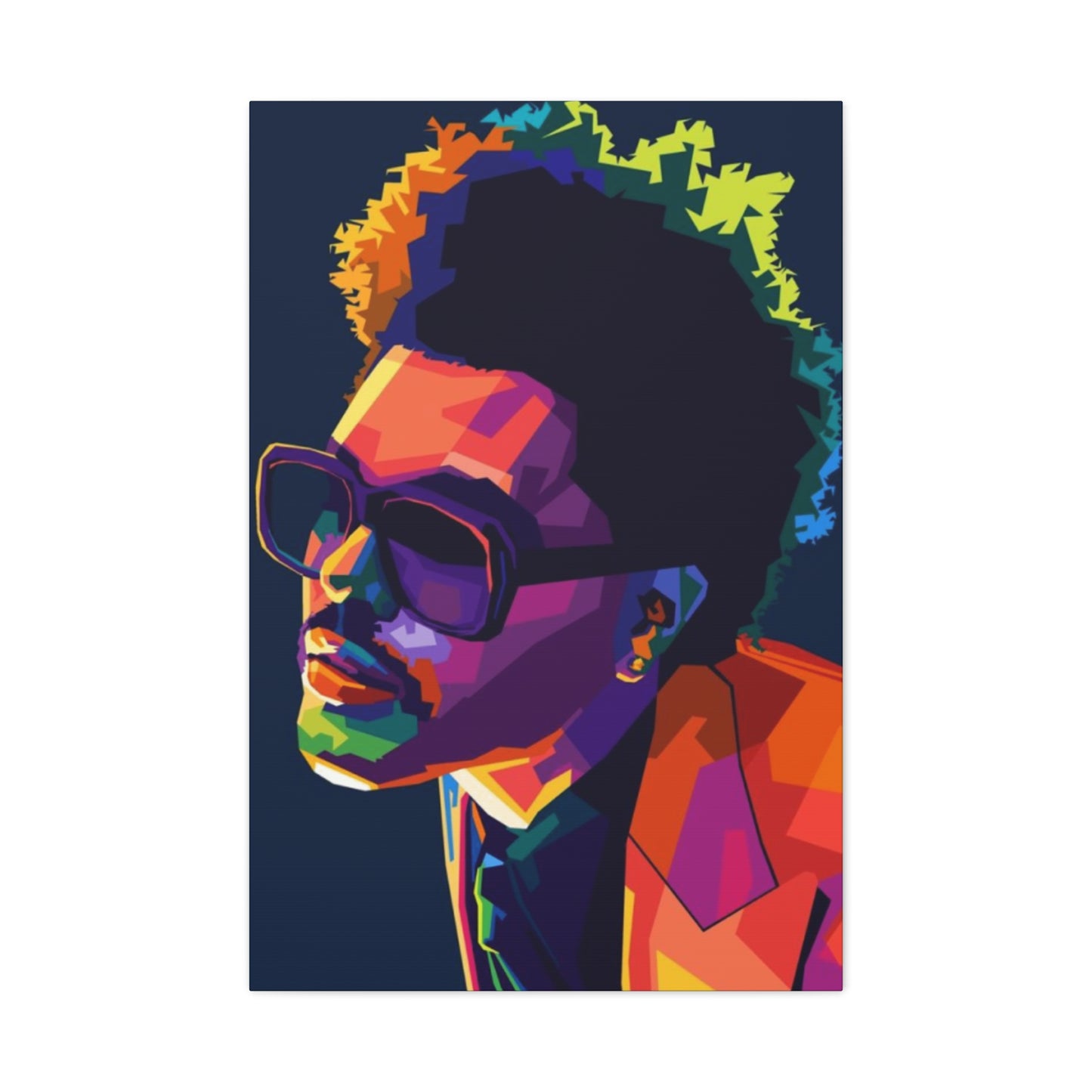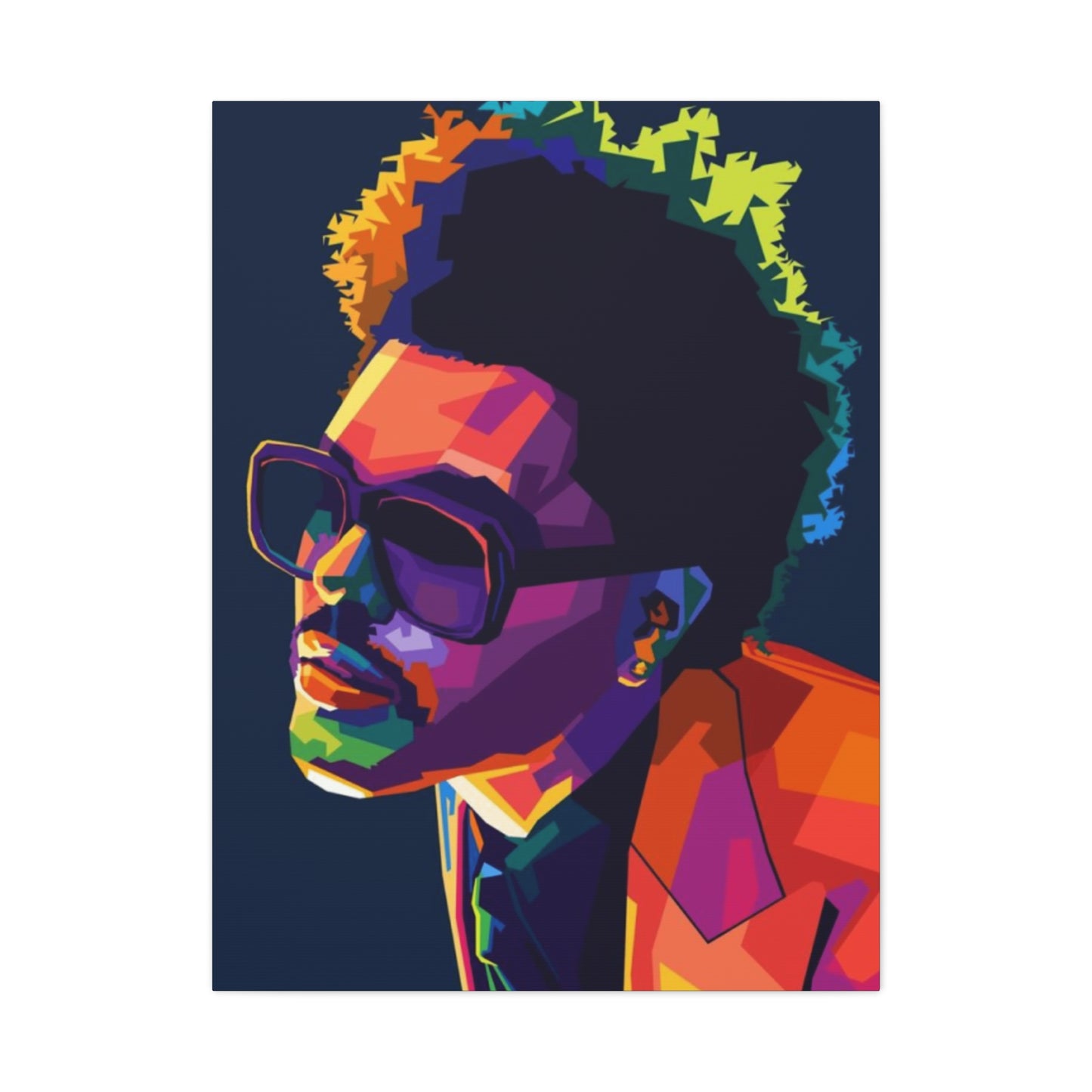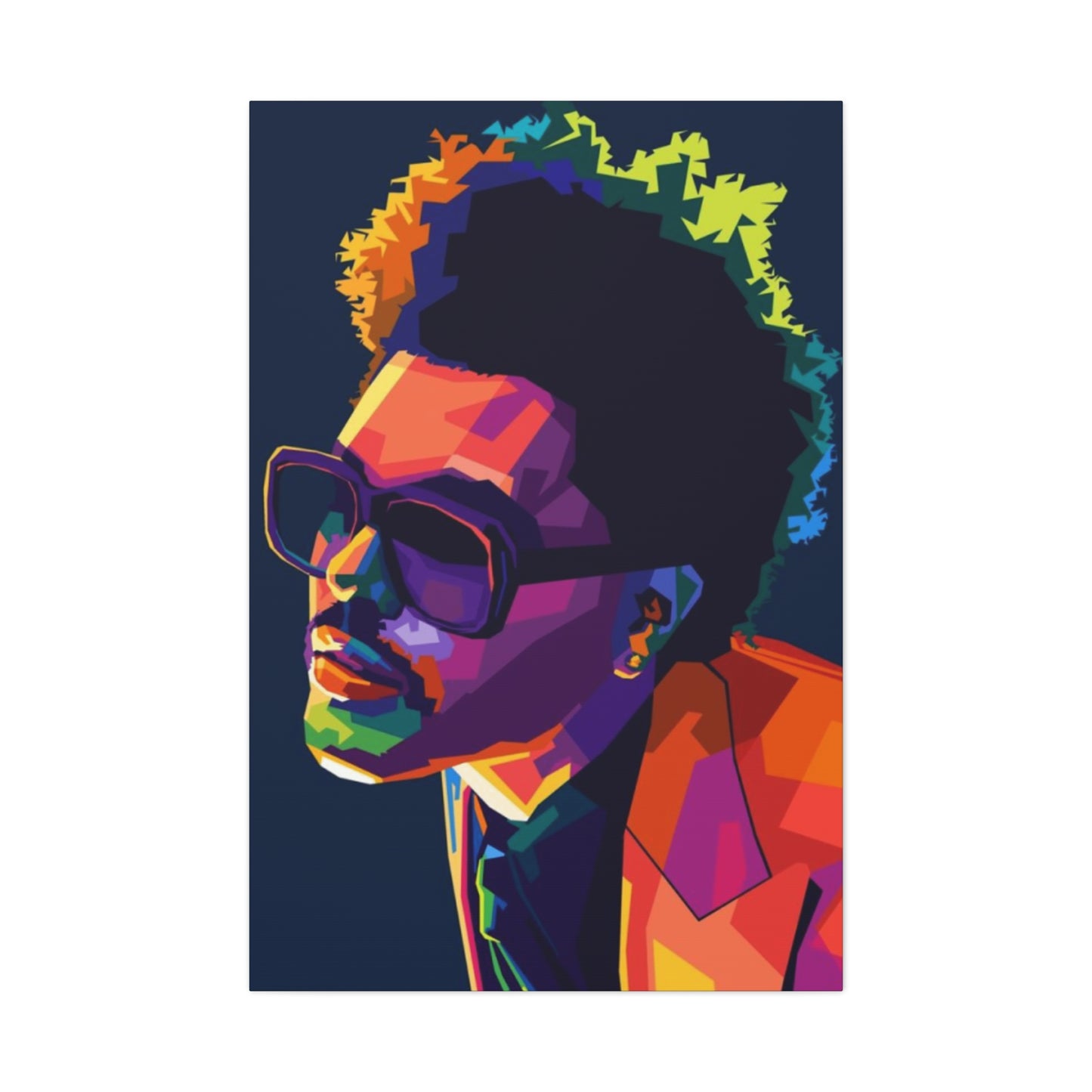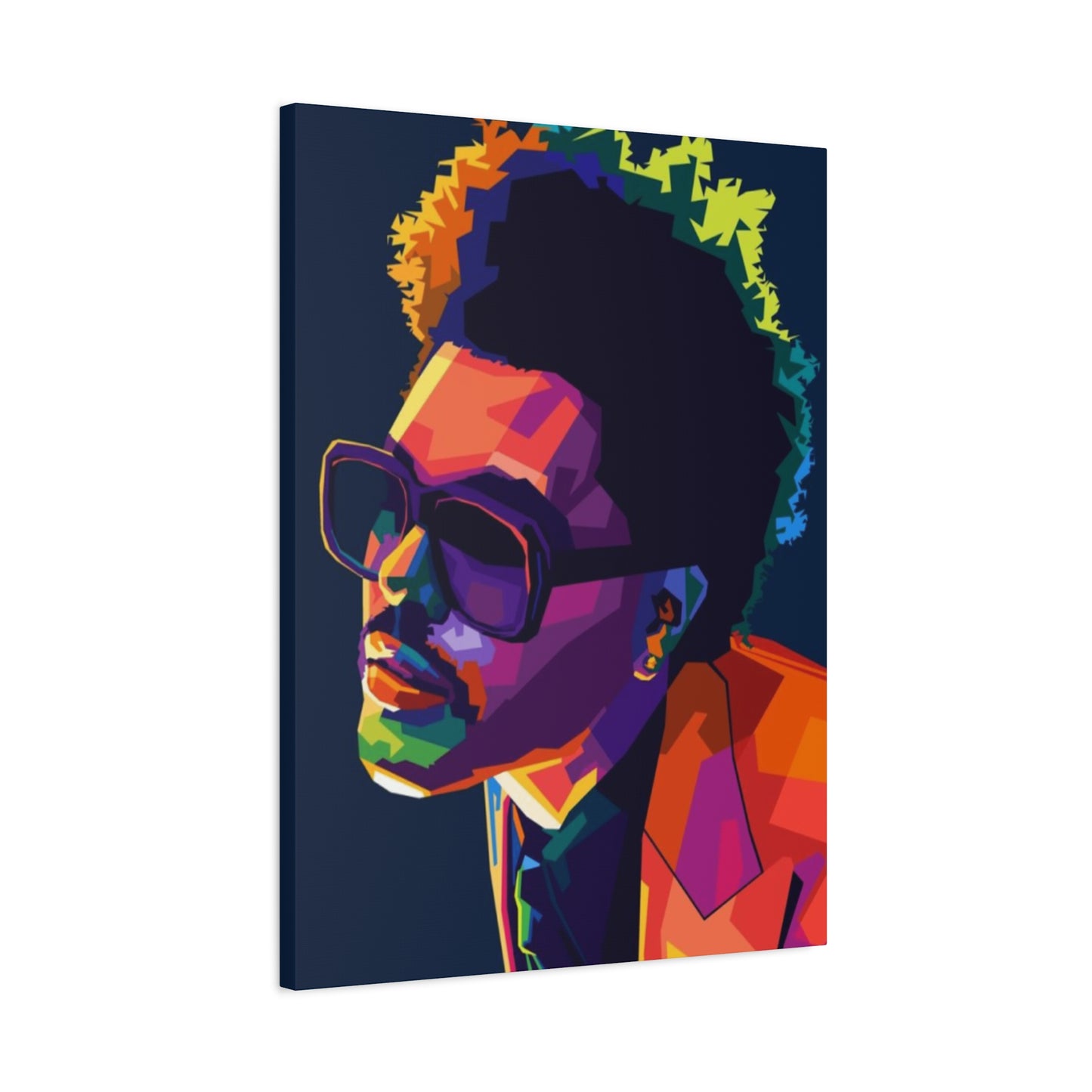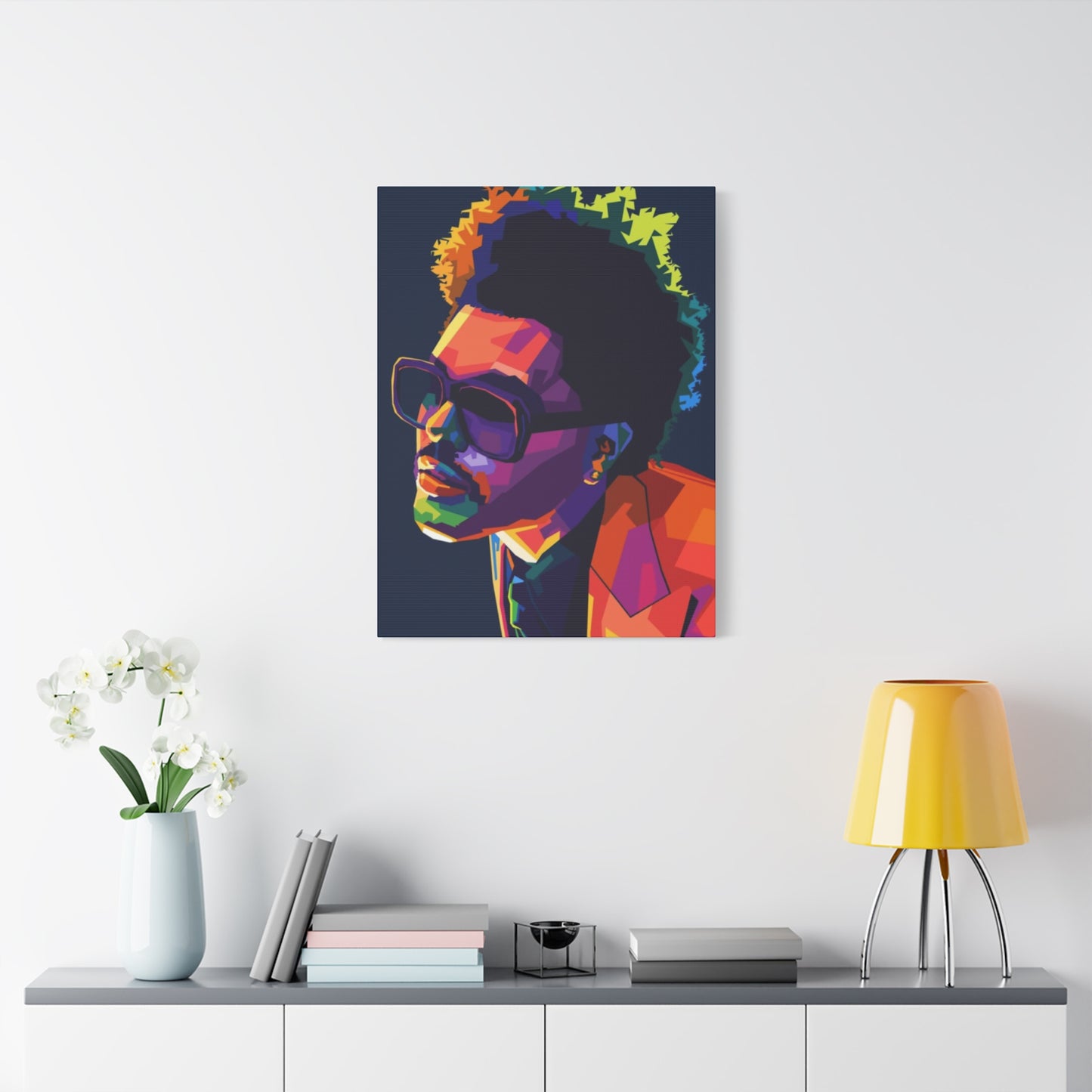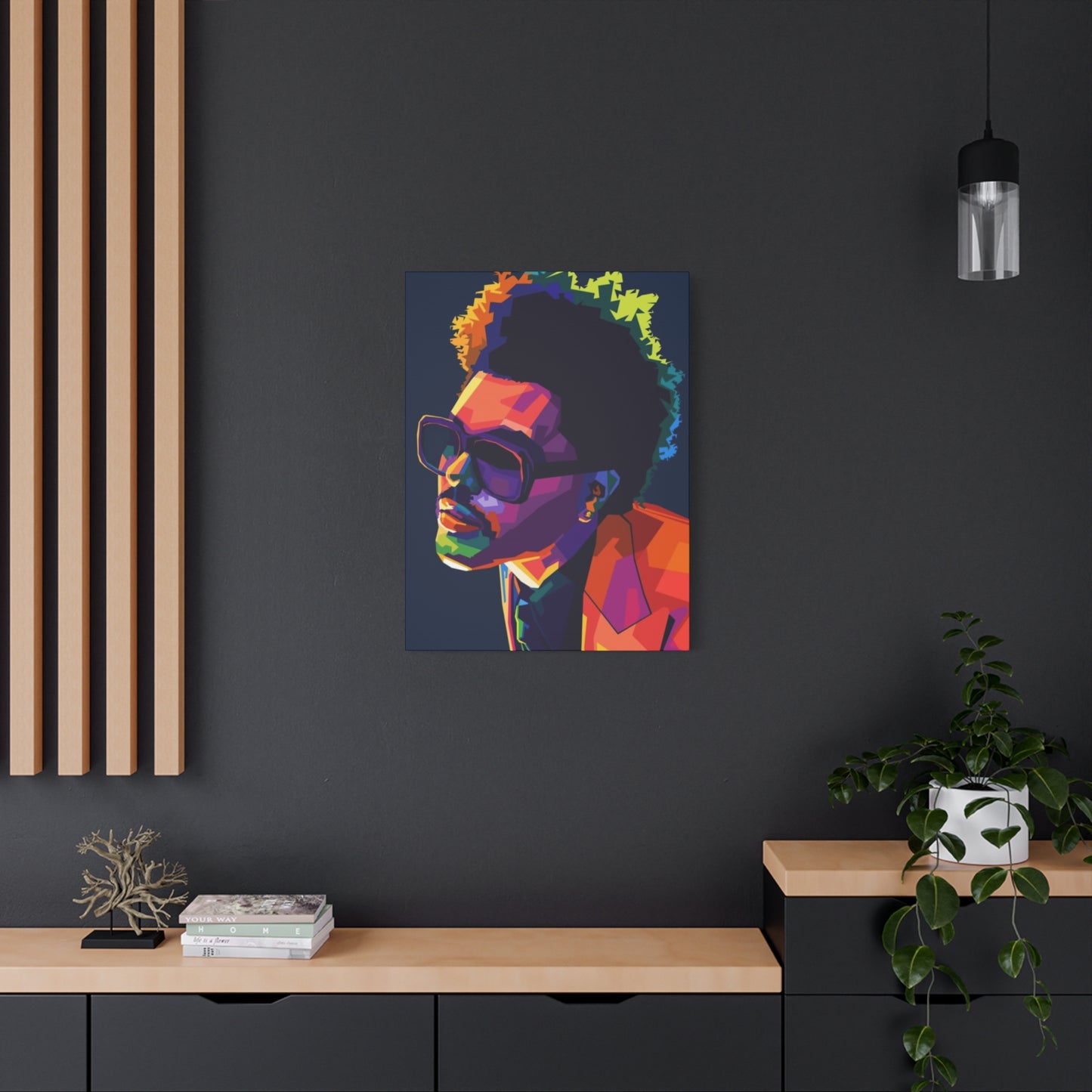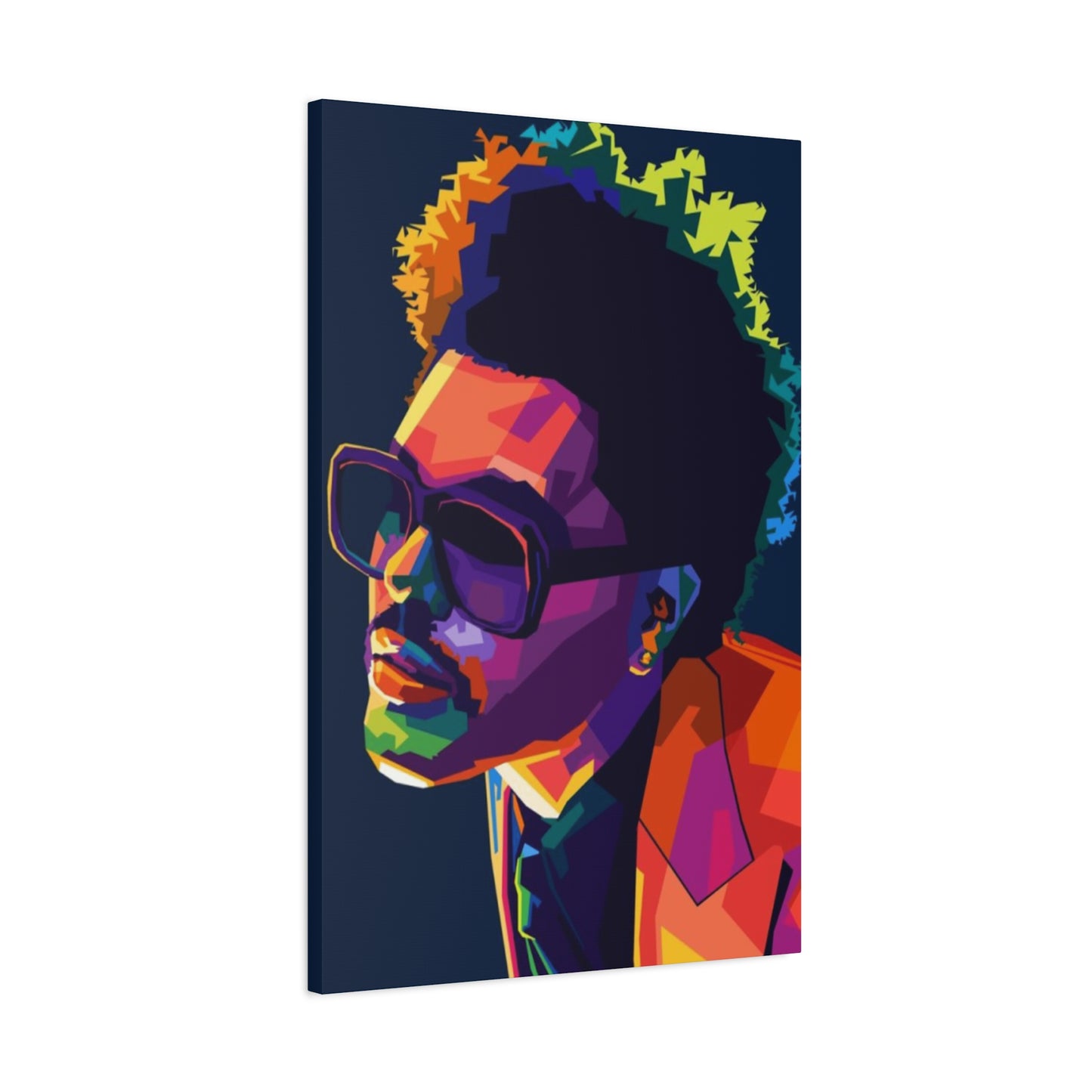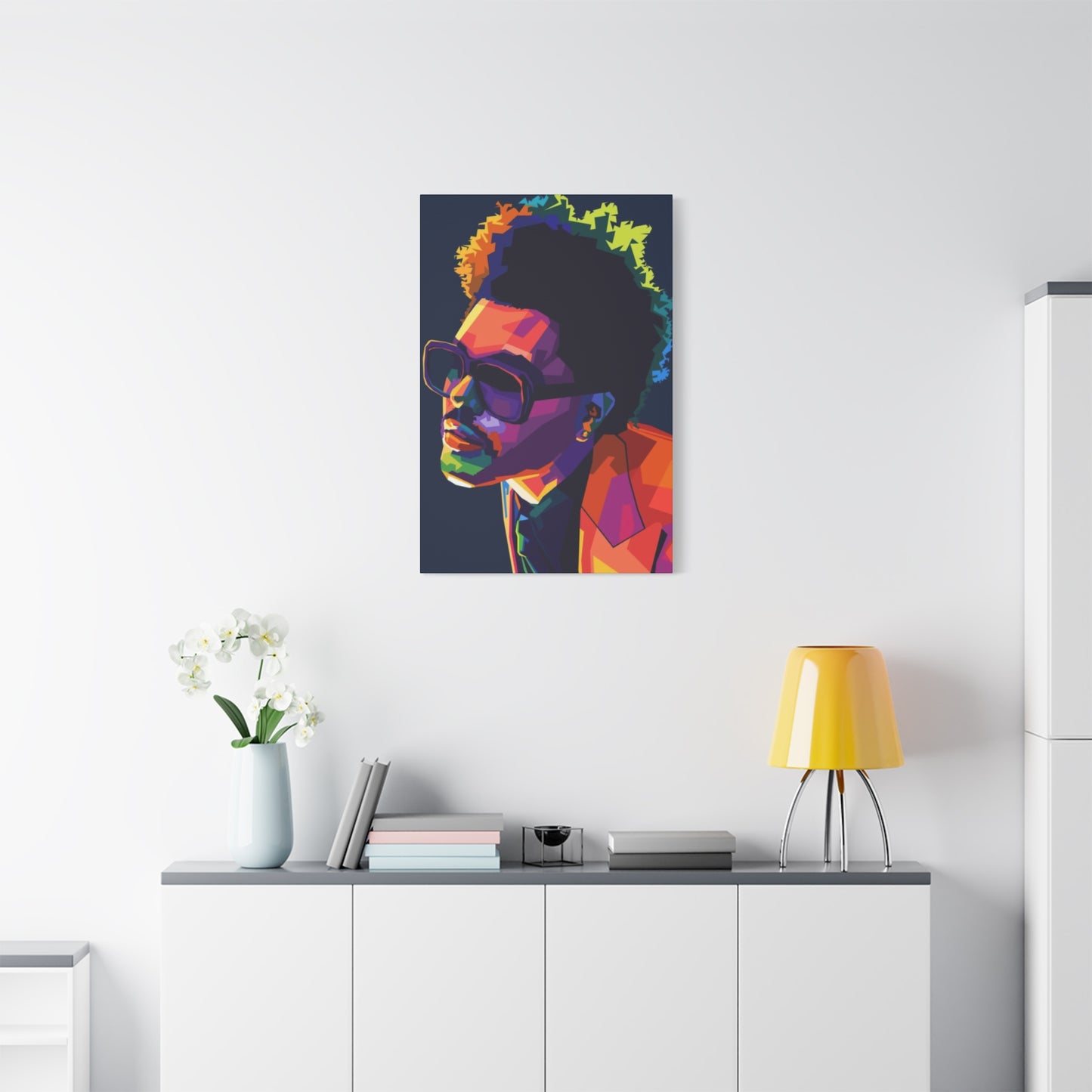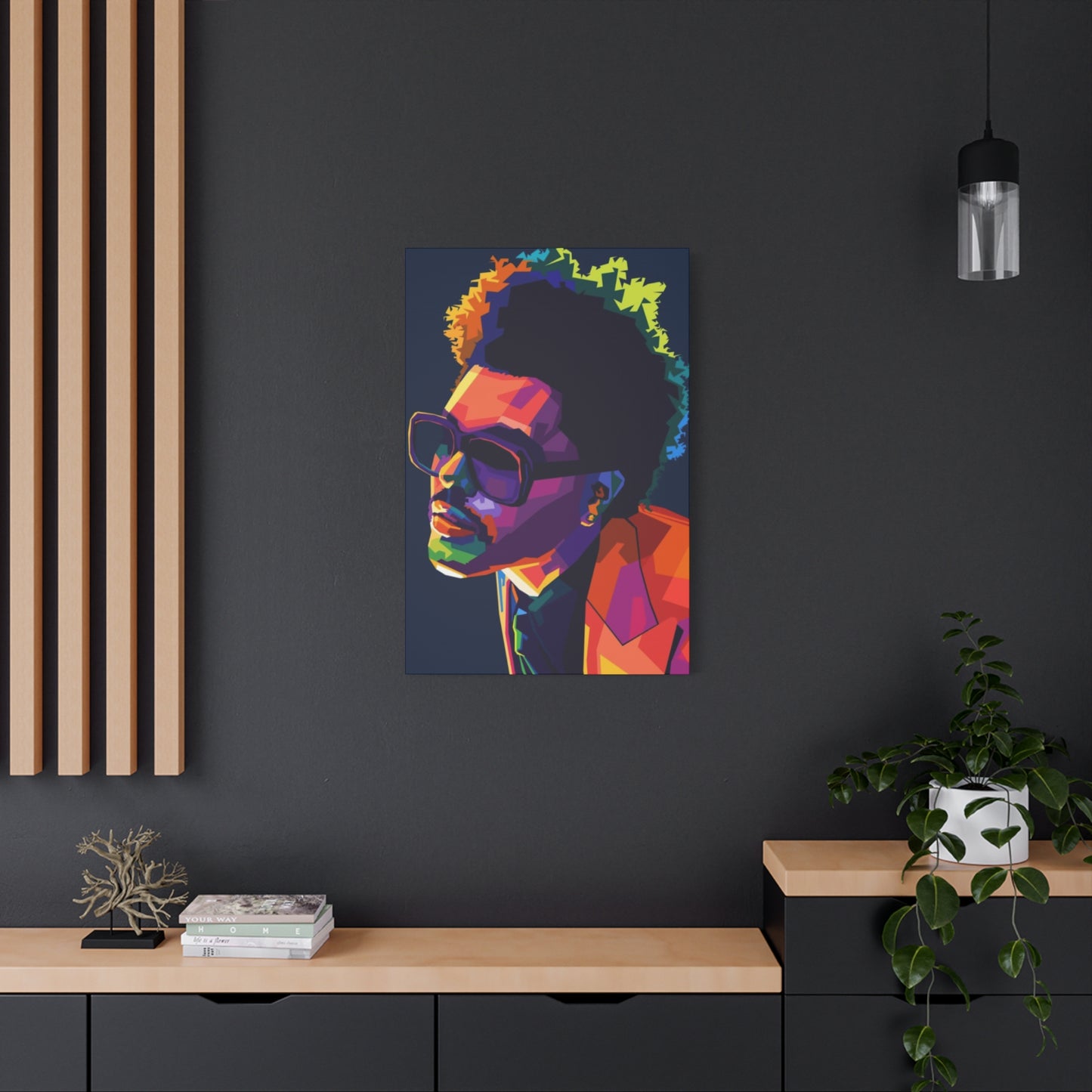Celebrate The Weeknd: Wall Art and Posters for Contemporary Spaces
Music has an incredible power to shape our emotions, memories, and personal spaces. When it comes to contemporary R&B and pop culture, few artists have made as significant an impact as Abel Tesfaye, known professionally as The Weeknd. His distinctive sound, visual aesthetics, and artistic evolution have created a devoted fanbase that extends far beyond just listening to his music. Fans seek to incorporate his artistic vision into their living spaces through various forms of wall art, creating environments that reflect their musical tastes and personal style.
The intersection of music and interior design has become increasingly popular, with fans looking for ways to showcase their favorite artists through carefully curated wall displays. The Weeknd's visual identity, from album covers to promotional imagery, offers a rich palette of artistic elements that can enhance any room's aesthetic. Whether you're decorating a bedroom, music room, living area, or creative space, incorporating music-inspired wall art can create a personalized atmosphere that resonates with your musical preferences.
This comprehensive exploration delves into the world of music-inspired interior design, focusing specifically on how to integrate artistic representations of popular contemporary artists into your home decor. From canvas prints to poster collections, portrait art to album-inspired pieces, there are countless ways to create stunning wall displays that celebrate musical artistry while maintaining sophisticated design principles.
Canvas Prints for Dedicated Music Spaces
Creating a dedicated music room or entertainment area provides the perfect opportunity to showcase your musical preferences through carefully selected artwork. Canvas prints offer a sophisticated way to display artistic representations of your favorite musicians while maintaining a polished, gallery-like appearance in your space. These high-quality reproductions can transform bare walls into focal points that celebrate musical artistry.
When selecting canvas prints for music-dedicated spaces, consider the room's overall lighting, color scheme, and intended atmosphere. Music rooms often benefit from artwork that complements the acoustic elements while adding visual interest. Large-format canvas pieces work particularly well in spaces with high ceilings or expansive wall areas, creating dramatic focal points that draw attention and spark conversation.
The beauty of canvas prints lies in their versatility and professional appearance. Unlike traditional posters, canvas artwork doesn't require framing and can be hung directly on walls, creating clean lines and modern aesthetics. This makes them ideal for contemporary interior designs where simplicity and elegance are priorities. Music-themed canvas prints can range from abstract interpretations of sound waves to realistic portraits, offering options for various design preferences.
Consider grouping multiple canvas pieces of different sizes to create dynamic wall compositions. A large central piece surrounded by smaller complementary artworks can establish visual hierarchy while telling a cohesive story about your musical interests. This approach works particularly well in rooms where music is both listened to and discussed, as the artwork provides natural conversation starters and reflects the space's primary function.
The technical quality of canvas prints ensures longevity and maintains vibrant colors over time. High-resolution printing on quality canvas materials means these artworks can withstand the environmental factors often present in music rooms, such as temperature fluctuations from electronic equipment and varying humidity levels. This durability makes canvas prints a worthwhile investment for long-term interior design projects.
Color coordination between canvas artwork and existing room elements creates cohesive design schemes. Many contemporary artists use distinctive color palettes in their visual branding, which can be incorporated into room design through complementary paint colors, furniture selections, and lighting choices. This creates immersive environments where the artwork feels integrated rather than simply hung on walls.
Creative Display Methods for Music Posters
Moving beyond traditional hanging methods opens up exciting possibilities for poster displays that capture attention and showcase creativity. Music posters, whether official promotional materials or artistic interpretations, can be incorporated into room designs through innovative display techniques that enhance their visual impact while protecting their condition.
Gallery wall arrangements have become increasingly popular for displaying multiple posters in cohesive compositions. This approach allows fans to showcase various aspects of an artist's career, from different album cycles to tour memorabilia, creating comprehensive visual narratives. Strategic spacing between pieces, consistent matting or framing choices, and thoughtful arrangement patterns contribute to professional-looking displays that rival commercial art galleries.
Floating frame systems offer modern alternatives to traditional picture frames, creating the illusion that posters are suspended within glass enclosures. This contemporary approach works particularly well with minimalist interior designs and allows the artwork to appear as if it's floating against the wall. The clean lines and transparent materials don't compete with the poster imagery, ensuring the music-related content remains the focal point.
Backlighting techniques can dramatically enhance poster displays, particularly for pieces with translucent or semi-transparent elements. LED light strips positioned behind posters create ambient lighting effects that highlight artwork while contributing to room atmosphere. This approach works especially well in entertainment areas where mood lighting enhances the overall experience of listening to music or watching performances.
Rotating display systems allow collectors to showcase larger poster collections without overwhelming wall space. These systems, which can be as simple as clip-based hanging systems or as complex as motorized rotation mechanisms, enable regular changes in displayed artwork. This approach keeps room aesthetics fresh while allowing comprehensive collections to be appreciated over time.
Digital integration represents the cutting edge of poster display innovation. Digital frames can cycle through high-resolution images of poster collections, album artwork, and promotional materials, creating dynamic displays that change throughout the day. This technology allows fans to showcase extensive collections in limited space while incorporating interactive elements that respond to music playback or time-based triggers.
Three-dimensional display techniques add depth and visual interest to poster presentations. Shadow boxes, layered mounting systems, and mixed-media approaches can transform flat posters into sculptural wall elements. These techniques work particularly well when incorporating related memorabilia, such as concert tickets, vinyl records, or promotional items, creating comprehensive displays that tell stories beyond just the visual artwork.
Wall Art Inspiration for Teenage Spaces
Teenage bedrooms and personal spaces provide unique opportunities for self-expression through music-inspired wall art. These environments often serve multiple functions, from study areas to social spaces, requiring artwork selections that reflect personal identity while maintaining functionality. Music-themed wall art can help teenagers create spaces that feel authentically their own while showcasing their evolving tastes and interests.
Age-appropriate artwork selection involves balancing artistic merit with content suitable for younger audiences. Many contemporary artists produce imagery that ranges from abstract and artistic to more mature themes, requiring careful curation for teenage spaces. Focus on artwork that emphasizes musical artistry, creative expression, and positive messaging while avoiding potentially controversial or inappropriate content.
Budget-conscious approaches to wall art acquisition make music-themed decorating accessible to teenage budgets. Print-on-demand services, DIY printing projects, and creative repurposing of promotional materials can provide affordable alternatives to expensive original artwork. Teaching teenagers to research copyright considerations and support artists through legitimate channels helps develop responsible consumption habits while building meaningful collections.
Removable display options accommodate the changing nature of teenage preferences and living situations. Command strips, removable adhesives, and clip-based hanging systems allow for frequent updates without damaging walls or artwork. This flexibility is particularly important in rental properties or family homes where permanent modifications aren't permitted.
Collaborative curation involves teenagers in the artwork selection and arrangement process, fostering ownership and pride in their personal spaces. This approach can include researching artists, understanding visual composition principles, and making informed decisions about how artwork relates to other room elements. These skills translate to broader aesthetic appreciation and decision-making abilities.
Integration with study and creative activities ensures that wall art enhances rather than distracts from important teenage activities. Strategic placement of artwork can create inspiring environments for homework, creative projects, and personal reflection while maintaining appropriate focus areas. Consider how lighting, color psychology, and visual stimulation affect concentration and mood in multifunctional teenage spaces.
Social consideration acknowledges that teenage spaces often serve as gathering areas for friends and social activities. Wall art can serve as conversation starters and expression of shared interests while creating welcoming environments for social interaction. Balance personal expression with inclusive atmospheres that make guests feel comfortable and engaged.
Developing Comprehensive Fan Art Collections
Building meaningful collections of music-inspired artwork requires thoughtful planning, research, and curation strategies that go beyond simply acquiring individual pieces. Successful fan art collections tell stories, document artistic evolution, and create cohesive visual narratives that enhance living spaces while celebrating musical artistry.
Authentication and provenance research becomes increasingly important as collections grow and mature. Understanding the difference between official promotional materials, licensed artwork, and fan-created pieces helps collectors make informed decisions about acquisitions. Official merchandise often carries higher value and historical significance, while independent artist interpretations can offer unique perspectives and artistic innovation.
Preservation considerations ensure that collections maintain their condition and value over time. Proper storage for pieces not currently displayed, protection from environmental factors, and handling procedures all contribute to collection longevity. This includes understanding how different materials respond to light exposure, humidity, and temperature fluctuations, particularly important for paper-based items like posters and prints.
Documentation systems help collectors track their acquisitions, including purchase information, condition assessments, and provenance details. This information becomes valuable for insurance purposes, resale considerations, and personal organization. Digital cataloging systems can include photographs, condition reports, and historical context, creating comprehensive records that enhance collection value and management.
Display rotation strategies allow extensive collections to be appreciated while preventing any single piece from becoming overly familiar or losing impact. Planned rotation schedules based on seasons, anniversaries, or personal preferences keep living spaces fresh while ensuring all collection pieces receive appropriate appreciation. This approach also helps protect artwork from prolonged exposure to potentially damaging environmental factors.
Community engagement through collector networks, fan forums, and social media platforms can enhance the collecting experience while providing access to rare pieces and insider information. These communities often share information about upcoming releases, artist events, and trading opportunities that individual collectors might otherwise miss.
Investment perspective considers the long-term value potential of collection pieces while acknowledging that primary motivation should be personal enjoyment and artistic appreciation. Some music memorabilia and artwork appreciates significantly over time, particularly items connected to pivotal moments in artists' careers or limited-edition releases with documented scarcity.
Album Cover Art as Interior Design Elements
The visual elements of album artwork have evolved into sophisticated design pieces that can anchor interior design schemes while celebrating musical artistry. These iconic images often represent collaborative efforts between musicians, graphic designers, and photographers, resulting in artwork that stands alone as compelling visual compositions worthy of prominent display in living spaces.
Historical significance adds depth to album cover displays, as many covers represent important moments in music history, cultural movements, or artistic innovation. Understanding the context behind iconic album artwork enhances appreciation and provides conversation points when sharing spaces with others. This historical perspective can inform thematic room designs that celebrate specific eras, genres, or cultural movements.
Color theory applications help integrate album artwork into existing interior design schemes. Many album covers feature carefully planned color palettes that can be echoed in room paint colors, fabric selections, and accessory choices. This approach creates cohesive environments where the artwork feels intentionally integrated rather than arbitrarily placed.
Scale considerations determine how album artwork translates to wall display formats. Original album covers, whether vinyl LP or CD size, may require enlargement to achieve appropriate visual impact in room settings. However, maintaining proper proportions and image quality during scaling requires careful attention to resolution and printing specifications.
Framing and presentation techniques can elevate album artwork from simple reproductions to sophisticated wall installations. Museum-quality framing, acid-free matting, and UV-protective glazing preserve artwork while creating professional presentations suitable for any interior design style. These investment approaches transform album covers into legitimate art pieces worthy of prominent placement.
Grouping strategies for multiple album covers can create powerful wall installations that document artistic evolution or celebrate musical diversity. Chronological arrangements tell stories about artist development, while thematic groupings might focus on color relationships, design aesthetics, or cultural significance. These approaches require careful planning to achieve visual balance and narrative coherence.
Lighting considerations enhance album artwork display while protecting pieces from damage. Proper illumination can highlight artwork details and create dramatic visual effects, but excessive light exposure can cause fading and deterioration over time. LED lighting systems offer energy-efficient solutions that generate minimal heat while providing excellent color rendering for artwork appreciation.
Bedroom Integration Strategies
Personal bedroom spaces provide intimate environments where music-inspired wall art can create deeply personal and emotionally resonant atmospheres. These private spaces allow for more personal expression and experimental design choices that might not be appropriate in public areas of homes, making bedrooms ideal locations for showcasing musical preferences and artistic appreciation.
Sleep environment considerations ensure that artwork choices support restful sleep while providing visual interest during waking hours. Color psychology suggests that certain colors and visual compositions can affect mood and sleep quality, making artwork selection an important factor in bedroom design. Calming color palettes and non-stimulating imagery work better in sleep areas than high-energy, vibrant compositions.
Lighting integration involves artwork in bedroom lighting schemes that serve multiple functions throughout the day. Natural light exposure during daytime hours showcases artwork detail and color accuracy, while artificial lighting for evening hours should create relaxing atmospheres conducive to winding down. Adjustable lighting systems allow for different artwork appreciation at various times and activities.
Privacy considerations acknowledge that bedrooms are personal spaces where artwork can reflect more intimate aspects of musical preferences and personal identity. This privacy allows for artistic choices that might be too personal or experimental for public spaces, providing opportunities for authentic self-expression through music-themed wall art.
Storage integration addresses the practical needs of bedroom functionality while incorporating music-themed artwork. Shelving systems for music collections, storage solutions for rotating artwork, and organization systems for memorabilia can all be designed to complement wall art displays while serving essential bedroom functions.
Romantic atmosphere creation considers how music-inspired artwork contributes to intimate bedroom environments. Soft lighting highlighting meaningful artwork, carefully selected color palettes, and personal significance of musical choices all contribute to creating romantic settings where music and visual art enhance emotional connections.
Personal reflection spaces within bedrooms can be enhanced by thoughtfully selected music-themed artwork that supports contemplation and personal growth. These areas might feature artwork connected to personally meaningful songs, inspiring lyrics, or artists who have provided comfort during challenging times, creating supportive environments for personal reflection and emotional processing.
Contemporary Culture Canvas Concepts
The intersection of popular culture and fine art has created new categories of canvas artwork that celebrate contemporary music while maintaining artistic sophistication. These pieces bridge the gap between fan memorabilia and serious art collecting, offering options for those who want to incorporate pop culture references into elevated interior design schemes.
Artistic interpretation techniques transform popular music imagery into sophisticated visual compositions suitable for refined interior spaces. Abstract representations, artistic filters, and creative compositions can take familiar musical imagery and present it in ways that function as serious artwork while maintaining connection to popular culture themes.
Mixed media approaches combine various artistic techniques and materials to create unique pieces that go beyond simple reproductions. These might incorporate elements like collage, painting techniques, or dimensional elements that add depth and visual interest while celebrating musical themes. Such approaches create one-of-a-kind pieces that function as serious art investments.
Size and scale considerations for pop culture canvas artwork help determine appropriate placement and visual impact in different room settings. Large-scale pieces can serve as dramatic focal points in living areas, while smaller pieces might work better in intimate spaces or as part of larger gallery wall arrangements.
Quality assessment criteria help distinguish between mass-produced prints and legitimate artistic works worthy of serious consideration. Factors like printing techniques, material quality, limited edition status, and artist credentials all contribute to the artistic and investment value of pop culture canvas pieces.
Cultural commentary aspects of contemporary pop culture artwork add intellectual depth to decorative choices. Many artists working in this space provide commentary on celebrity culture, music industry dynamics, or social issues related to popular music, creating artwork that functions on multiple levels beyond simple decoration.
Trend awareness helps collectors and decorators make informed decisions about pop culture artwork that will maintain relevance and appeal over time. Understanding the difference between fleeting trends and enduring cultural significance helps guide acquisition decisions for long-term interior design projects.
Living Space Wall Art Integration
Common living areas present unique challenges and opportunities for incorporating music-themed wall art, as these spaces must appeal to various household members and guests while maintaining sophisticated aesthetic standards. Successfully integrating music artwork into living spaces requires balancing personal expression with broad appeal and functional design requirements.
Conversation starter potential makes music-themed artwork particularly valuable in social spaces where guests gather and interact. Well-chosen pieces can spark discussions about musical preferences, shared experiences, and cultural interests, enhancing social interactions while showcasing host personality and interests. This social function adds value beyond simple decoration.
Cohesive design integration ensures that music-themed artwork complements existing furniture, color schemes, and architectural elements rather than competing with them. This requires careful consideration of scale, color relationships, and style compatibility to create harmonious environments where all elements work together to support overall design goals.
Focal point creation uses strategically placed music artwork to direct attention and establish visual hierarchy within living spaces. Large-scale pieces or carefully arranged groupings can serve as room anchors around which other design elements are organized, creating balanced and intentional interior compositions.
Flexibility considerations acknowledge that living spaces often need to adapt to different activities and occasions. Artwork selection and placement should support various functions, from casual family time to formal entertaining, without creating conflicts or inappropriate atmospheres for different situations.
Durability requirements for living space artwork differ from bedroom or private space pieces, as common areas typically experience higher traffic, more handling, and greater exposure to various environmental factors. This necessitates investment in quality materials and protection systems that maintain artwork condition despite increased exposure.
Maintenance accessibility ensures that artwork in living spaces can be properly cared for without disrupting room function or requiring excessive effort. Easy cleaning access, protection from accidental damage, and simple removal for periodic maintenance all contribute to practical long-term artwork management in high-use areas.
Distinctive Poster Collection Strategies
Developing unique poster collections requires moving beyond mainstream offerings to discover rare, artistic, or personally meaningful pieces that create distinctive wall displays. These collections often become deeply personal expressions of musical taste and collecting expertise, providing opportunities for creative display and ongoing acquisition projects.
Rarity identification helps collectors recognize valuable or unusual pieces that might appreciate over time while providing unique visual elements for display. Limited edition releases, promotional materials, international variants, and artist proofs often carry special significance and scarcity that makes them particularly desirable for serious collectors.
Condition assessment skills enable collectors to evaluate poster quality and make informed acquisition decisions. Understanding paper quality, printing techniques, storage history, and potential restoration needs helps collectors build valuable collections while avoiding costly mistakes or disappointing purchases.
Thematic organization approaches help large collections maintain coherence and display impact. Collections might be organized by artist, era, design style, color palette, or personal significance, creating opportunities for rotating displays that tell different stories while showcasing collection breadth and depth.
Networking opportunities within collector communities provide access to rare pieces, insider information, and trading opportunities that individual collectors might otherwise miss. Building relationships with other collectors, dealers, and industry professionals can significantly enhance collecting success and enjoyment.
Display innovation techniques help unique collections achieve maximum visual impact while protecting valuable pieces. Creative framing solutions, interactive display systems, and environmental controls all contribute to presentation quality while ensuring long-term preservation of collection value.
Documentation importance becomes critical for valuable or growing collections, providing records for insurance, resale, or personal organization purposes. Detailed catalogs including acquisition information, condition assessments, and provenance details create valuable resources for collection management and appreciation.
Current Music Wall Decor Movements
Contemporary trends in music-related wall decoration reflect broader cultural shifts, technological advances, and evolving aesthetic preferences that influence how fans incorporate musical themes into their living spaces. Understanding these trends helps decorators make informed choices that feel current while avoiding approaches that might quickly become dated.
Digital integration represents one of the most significant trend developments, with smart displays, programmable LED systems, and interactive artwork creating dynamic wall installations that respond to music playback or user preferences. These technological approaches offer unprecedented customization while creating immersive environments that blur lines between decoration and entertainment.
Minimalist approaches focus on selective, high-impact pieces rather than comprehensive displays, reflecting broader interior design trends toward simplification and intentional curation. This approach emphasizes quality over quantity, often featuring single statement pieces or carefully edited collections that create maximum impact with minimal visual clutter.
Sustainable decoration practices increasingly influence artwork acquisition and display choices, with consumers seeking environmentally responsible options and artists responding with eco-friendly materials and production methods. This trend encompasses everything from recycled materials in artwork production to energy-efficient lighting systems for display enhancement.
Personalization emphasis drives demand for custom artwork, commissioned pieces, and unique interpretations that reflect individual taste rather than mass-market aesthetics. This trend supports independent artists while creating opportunities for truly unique interior design elements that can't be replicated in other spaces.
Cross-cultural influences expand beyond Western popular music to incorporate global musical traditions and artistic styles, creating opportunities for diverse and culturally rich wall art collections. This trend reflects increasing global connectivity and appreciation for musical diversity.
Interactive elements add functional components to decorative artwork, creating pieces that serve multiple purposes beyond visual appeal. These might include hidden storage, integrated technology, or changeable elements that adapt to different moods or occasions.
Portrait Art in Modern Interior Design
Musical portrait art has evolved beyond simple photography reproductions to encompass sophisticated artistic interpretations that function as legitimate fine art while celebrating musical icons. These pieces can anchor modern interior design schemes while providing focal points that combine cultural significance with aesthetic sophistication.
Artistic style variety offers options for different interior design approaches, from hyperrealistic paintings to abstract interpretations to mixed-media compositions. This diversity allows portrait art to complement various design aesthetics while maintaining connection to musical themes and cultural significance.
Commissioning opportunities enable collectors to work directly with artists to create unique pieces tailored to specific spaces and preferences. Custom portrait work can incorporate personal elements, specific color requirements, or unique interpretive approaches that create one-of-a-kind artwork perfectly suited to individual interior design needs.
Scale considerations for portrait art help determine appropriate sizing for different room applications and viewing distances. Large-scale portraits can serve as dramatic focal points in spacious areas, while smaller pieces might work better in intimate settings or as components of larger gallery wall arrangements.
Cultural significance adds depth to portrait art selections, particularly when pieces reference important moments in music history or cultural movements. Understanding the historical and cultural context of musical figures can inform artwork selections that contribute meaningfully to interior design narratives.
Technical execution quality distinguishes professional artwork from amateur reproductions, affecting both visual impact and long-term value. Factors like color accuracy, detail resolution, artistic skill, and material quality all contribute to portrait art that functions as serious interior design elements.
Contemporary relevance ensures that portrait art selections maintain interest and significance over time rather than becoming dated references to temporarily popular figures. This consideration helps guide investment decisions for long-term interior design projects.
Personal Expression Through Music Art
Music-themed wall art provides powerful opportunities for personal expression and identity communication within living spaces. These decorative choices often reflect deep personal connections to musical experiences, memories, and cultural affiliations that go far beyond simple aesthetic preferences, creating environments that authentically represent occupant personality and values.
Emotional connection importance acknowledges that music artwork often carries significant personal meaning related to life experiences, relationships, or personal growth moments. Selecting pieces that reflect these deeper connections creates more meaningful living environments while providing daily reminders of important personal experiences and values.
Identity communication through artwork choices helps occupants express aspects of personality, cultural background, and personal interests that might not be apparent through other interior design elements. Music preferences often reflect deeper identity aspects, making music-themed artwork particularly effective for personal expression.
Memory preservation opportunities allow music artwork to commemorate specific concerts, albums, or musical experiences that hold special personal significance. These pieces can serve as tangible connections to important memories while creating conversation opportunities about meaningful life experiences.
Value alignment considers how music artwork selections reflect personal beliefs, social consciousness, or cultural values. Many musical artists engage with social issues or represent particular worldviews, making artwork selections opportunities for value expression and social commentary within personal spaces.
Creative exploration through music artwork can inspire personal artistic development and creative expression. Exposure to diverse artistic interpretations of musical themes can stimulate personal creativity while providing inspiration for individual artistic projects or creative endeavors.
Evolution accommodation recognizes that musical preferences and personal identity continue developing over time, requiring flexible approaches to artwork selection and display that can adapt to changing interests and growing sophistication in aesthetic appreciation.
Combining Multiple Music Art Styles
Successfully combining different types of music-related artwork requires understanding design principles that create cohesion while maintaining visual interest and avoiding chaotic compositions. Strategic mixing of formats, styles, and themes can create sophisticated wall displays that showcase artistic diversity while maintaining overall design harmony.
Visual balance techniques help multiple artwork pieces work together effectively rather than competing for attention or creating overwhelming displays. Understanding principles like color relationships, scale proportions, and visual weight distribution enables successful combinations that enhance rather than detract from individual pieces.
Style compatibility assessment guides decisions about which artwork pieces can successfully coexist in shared spaces. While contrasting styles can create dynamic displays, extreme differences in aesthetic approach might create jarring combinations that undermine overall design effectiveness.
Color coordination strategies help diverse artwork collections achieve visual coherence despite differences in style or format. Consistent color themes, complementary palettes, or strategic accent colors can unify different pieces while maintaining individual artwork integrity and impact.
Scale relationship planning ensures that different sized artwork pieces create intentional compositions rather than accidental arrangements. Understanding how different scales interact visually helps create hierarchy and flow within mixed artwork displays.
Spacing and arrangement principles guide the physical organization of mixed artwork to achieve professional-looking results. Strategic spacing, alignment patterns, and grouping techniques all contribute to successful combinations that feel intentional and sophisticated.
Theme development approaches help mixed artwork collections tell coherent stories or express unified concepts despite stylistic diversity. Thematic connections might relate to specific artists, musical eras, cultural movements, or personal experiences that provide underlying coherence to diverse visual elements.
Creating Dramatic Feature Walls
Feature walls dedicated to music-themed artwork can transform ordinary rooms into dynamic spaces that celebrate musical passion while serving as dramatic focal points for interior design schemes. These installations require careful planning and execution to achieve maximum impact while maintaining long-term appeal and functionality.
Planning and preparation phases involve assessing wall conditions, measuring spaces accurately, and developing comprehensive installation plans that account for electrical needs, structural considerations, and long-term maintenance requirements. Thorough preparation ensures successful installations that meet both aesthetic and practical needs.
Design concept development guides feature wall projects from initial inspiration through final execution, ensuring that finished installations align with intended goals and complement overall room design. Strong concepts provide direction for artwork selection, arrangement decisions, and supporting design elements.
Installation technique mastery ensures that feature walls are executed professionally and safely, particularly important for large-scale installations or pieces requiring special mounting systems. Understanding proper installation methods protects both artwork and wall surfaces while achieving intended visual effects.
Lighting design integration enhances feature wall impact while providing functional illumination for artwork appreciation. Strategic lighting placement can dramatically improve visual impact while contributing to overall room atmosphere and functionality.
Maintenance considerations ensure that feature walls remain attractive and functional over time despite environmental exposure and regular use. Planning for cleaning access, protection from damage, and periodic updates helps maintain installation quality throughout its intended lifespan.
Impact assessment evaluates whether feature wall installations achieve intended goals for visual impact, personal satisfaction, and interior design enhancement. Regular assessment helps guide future modifications or improvements to maintain maximum effectiveness.
Music Legend Canvas Collections
Celebrating iconic musical figures through carefully curated canvas collections creates opportunities for sophisticated interior design while honoring artistic legacies and cultural contributions. These collections often represent significant investments in both financial and aesthetic terms, requiring thoughtful planning and quality considerations.
Legacy significance adds historical and cultural weight to canvas collections focused on legendary musical figures, creating artwork displays that function as cultural commentary and historical documentation while serving decorative purposes. Understanding artistic and cultural impact helps guide selection decisions.
Artistic interpretation variety offers different approaches to representing musical legends, from realistic portraits to abstract compositions to conceptual artwork that captures essence rather than literal appearance. This diversity allows collections to reflect personal aesthetic preferences while maintaining thematic coherence.
Quality standards become particularly important for collections focused on respected musical figures, as these pieces often represent significant financial investments and personal meaningful displays. High-quality materials, professional printing techniques, and proper preservation methods ensure collections maintain value and appearance over time.
Authentication considerations help collectors distinguish between legitimate artwork and unauthorized reproductions, particularly important for pieces claiming connection to official sources or limited edition status. Understanding authentication markers protects collectors from fraudulent purchases while ensuring collection legitimacy.
Display strategies for legend-focused collections require balancing reverence for subject matter with sophisticated interior design principles. Successful displays honor musical legacy while creating visually appealing installations that enhance rather than overwhelm living spaces.
Investment perspective acknowledges that high-quality canvas collections focused on legendary musical figures may appreciate in value over time, particularly pieces with documented provenance or limited availability. However, primary motivation should remain personal enjoyment and aesthetic appreciation.
Dynamic Music Poster Concepts
Contemporary approaches to music poster design and display have evolved beyond traditional flat presentations to incorporate three-dimensional elements, interactive features, and innovative materials that create dynamic visual experiences. These advanced concepts offer opportunities for truly unique interior design elements that push boundaries while celebrating musical themes.
Three-dimensional enhancement techniques add depth and visual interest to traditional poster formats through layered mounting, shadow box presentations, or mixed-media additions that transform flat artwork into sculptural wall elements. These approaches create more engaging viewer experiences while maintaining poster accessibility and affordability.
Interactive element integration incorporates technology or movable components that respond to viewer presence or environmental conditions. These might include sound-activated displays, motion sensors, or user-controlled lighting systems that create participatory artwork experiences beyond traditional passive viewing.
Material innovation explores alternatives to traditional paper-based posters, including fabric prints, metal substrates, wood panels, or experimental materials that offer different visual and tactile qualities while maintaining poster accessibility and design flexibility.
Modular design approaches create poster systems that can be reconfigured, expanded, or adapted to different spaces and preferences over time. These flexible systems offer long-term value while accommodating changing aesthetic preferences and living situations.
Environmental responsiveness incorporates elements that change based on surrounding conditions like temperature, humidity, light levels, or sound input. These responsive features create living artwork that provides different experiences throughout the day or in response to musical playback.
Customization opportunities enable poster designs tailored to individual preferences, spaces, or specifications that create truly unique pieces unavailable through conventional channels. Custom work supports independent artists while creating personalized interior design elements.
Room Transformation Through Music Art
Strategic use of music-themed artwork can fundamentally alter room atmospheres and perceived characteristics, transforming ordinary spaces into environments that reflect musical passion while enhancing daily living experiences. These transformations require understanding how visual elements interact with spatial perception and emotional response.
Atmosphere creation considers how artwork selections contribute to overall room mood and energy levels. Different musical themes and artistic styles can create various atmospheres, from high-energy party environments to contemplative listening spaces, depending on artwork choices and presentation methods.
Spatial perception modification uses artwork to alter how room dimensions and proportions are perceived by occupants and visitors. Strategic artwork placement can make small spaces feel larger, draw attention away from architectural limitations, or create intimate areas within larger rooms.
Color psychology application leverages understanding of how different colors affect mood and behavior to create desired room atmospheres through music artwork selections. Warm colors might create energetic environments while cool tones could support relaxation and contemplation.
Lighting interaction planning considers how artwork responds to different lighting conditions throughout the day and how lighting design can enhance artwork impact while supporting various room functions and activities.
Flow and circulation improvement uses artwork placement to guide movement through spaces and create natural pathways that enhance room functionality while providing visual interest and engagement opportunities.
Personal sanctuary creation employs music artwork to establish spaces that feel distinctly personal and separate from public areas, providing retreat environments where occupants can connect with musical preferences and personal identity.
Fan-Created and Official Art Balance
Successfully incorporating both official promotional materials and fan-created interpretations requires understanding the different qualities each type brings to interior design while creating balanced displays that respect artistic creativity and commercial authenticity. This balance allows for diverse collections that celebrate musical appreciation from multiple perspectives.
Official artwork significance stems from its direct connection to artist vision and commercial music promotion, often carrying historical importance and authenticated provenance that adds legitimacy and potential investment value to collections. Official pieces represent direct artistic statements from musicians and their creative teams.
Fan art appreciation recognizes the creative contributions of independent artists who interpret musical themes through personal artistic vision, often bringing fresh perspectives and innovative approaches that complement official materials while supporting artistic community development.
Copyright consideration ensures that collection building respects intellectual property rights while supporting artists appropriately. Understanding fair use principles, licensing requirements, and ethical acquisition practices protects collectors while supporting creative communities.
Quality assessment applies to both official and fan-created pieces, considering factors like artistic skill, material quality, printing specifications, and long-term durability that affect display effectiveness and collection value regardless of artwork origin.
Display integration techniques help official and fan-created pieces work together harmoniously while respecting the different characteristics each type brings to collections. Strategic arrangement and presentation methods can highlight strengths while minimizing potential conflicts between different artistic approaches.
Community support considerations acknowledge how collection choices can support independent artists, official merchandise channels, and creative communities that contribute to musical culture and artistic development.
Value balance recognizes that both official and fan-created artwork can contribute meaningfully to collections and interior design projects, with value determined by personal significance, artistic merit, and collection goals rather than simply commercial origin or official status.
Seasonal Music Art Rotation
Implementing seasonal rotation schedules for music artwork collections keeps living spaces fresh while protecting pieces from prolonged environmental exposure and providing opportunities to appreciate extensive collections throughout the year. These rotation strategies require planning and organization systems that support efficient changes while maintaining display quality.
Planning and scheduling systems help establish regular rotation patterns that align with seasons, holidays, personal preferences, or musical anniversaries that provide natural timing for collection changes. Consistent schedules ensure that all pieces receive appropriate display time while maintaining organized collection management.
Storage solutions for non-displayed pieces must provide protection from environmental factors while maintaining easy access for rotation activities. Climate-controlled storage, protective packaging, and organization systems all contribute to collection preservation during storage periods.
Transition planning addresses the practical aspects of changing displayed artwork, including installation and removal procedures, wall preparation needs, and coordination with other interior design modifications that might coincide with artwork changes.
Theme development for seasonal displays can incorporate holiday themes, seasonal colors, or time-appropriate musical references that enhance the natural rhythm of seasonal changes while maintaining connection to musical interests and personal preferences.
Documentation systems track rotation schedules, condition assessments, and display history to ensure all pieces receive appropriate attention while providing records for insurance, maintenance, and personal organization purposes.
Efficiency optimization streamlines rotation processes to minimize time and effort required while maintaining display quality and collection protection. Standardized procedures, appropriate tools, and systematic approaches all contribute to successful rotation programs.
Flexibility accommodation allows rotation schedules to adapt to changing preferences, special occasions, or unexpected opportunities without compromising overall collection management or display effectiveness.
Conclusion
Celebrating The Weeknd through wall art and posters offers a vibrant and stylish way to bring music, personality, and contemporary flair into interior spaces. By featuring iconic portraits, abstract interpretations, or performance-inspired imagery, these artworks transform walls into engaging focal points that capture the essence of the artist while enhancing the aesthetics of modern interiors. Whether displayed in living rooms, bedrooms, studios, or entertainment areas, The Weeknd-inspired wall art elevates spaces by blending pop culture with visual sophistication, creating environments that are dynamic, expressive, and culturally resonant.
The appeal of The Weeknd wall art lies in its ability to merge artistic creativity with the charisma and distinct identity of the musician. Artists often highlight his signature style, emotive expressions, and memorable performances, using bold color palettes, abstract textures, and modern graphic techniques to convey energy and mood. Each piece captures both the personality of The Weeknd and the atmosphere of his music, allowing fans to connect emotionally with the artwork while enjoying a contemporary visual experience. This fusion of style and music transforms ordinary walls into curated spaces that celebrate artistry and individuality.
Beyond aesthetics, The Weeknd wall art carries cultural and emotional significance. Music often evokes strong feelings of nostalgia, passion, and inspiration, and incorporating artwork inspired by a celebrated artist allows homeowners to reflect these emotions in their living spaces. Each poster or canvas serves as a reminder of creativity, personal expression, and the cultural impact of music, while inspiring energy and motivation in everyday life. Fans can create spaces that celebrate their love for the artist while establishing a unique and personalized interior environment.
From a design perspective, The Weeknd-inspired wall art is highly versatile. Large-scale canvases can become dramatic centerpieces in living rooms, studios, or entertainment spaces, while smaller prints or gallery-style arrangements enhance bedrooms, hallways, or office walls. The bold and modern color schemes of these artworks integrate seamlessly with contemporary, minimalist, or eclectic interiors, offering visual interest and cohesion. Thoughtful placement ensures that each piece maximizes impact while complementing the overall décor.
Ultimately, celebrating The Weeknd through wall art and posters is more than decoration—it is a celebration of music, culture, and artistic identity. By thoughtfully incorporating these pieces into interiors, fans can create spaces that inspire, energize, and elevate contemporary design. Each artwork transforms walls into dynamic expressions of style, creativity, and cultural connection, leaving a lasting impression of both artistry and fandom.











